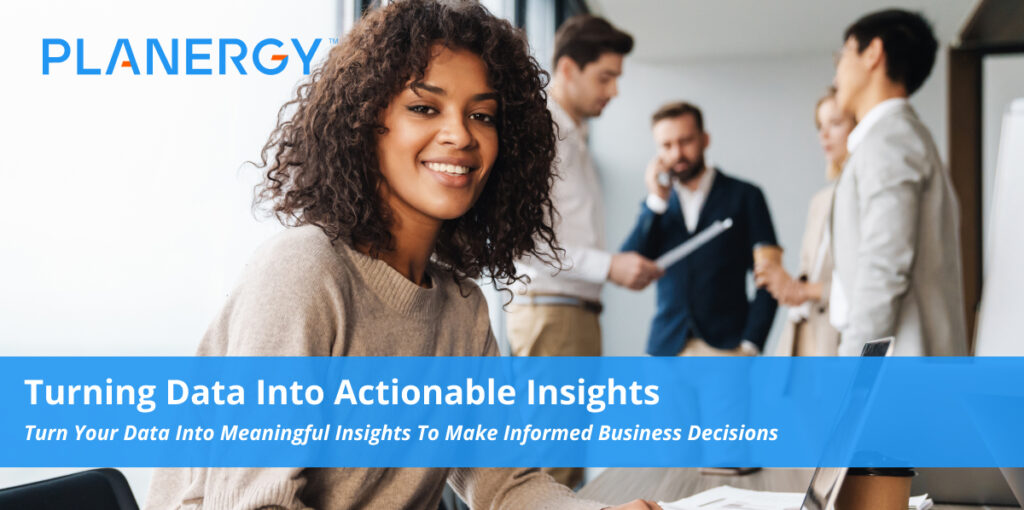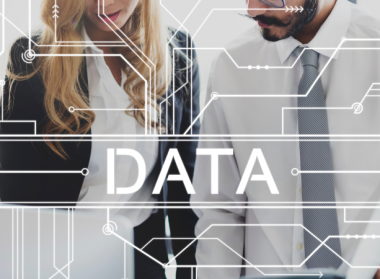Today, businesses are generating more data than ever before. Till 2025, global data creation is projected to grow to more than 180 zettabytes.
With a plethora of data collection points available at their disposal, it’s easier for business leaders to be lost in the information glut.
However, every business and business leader should ponder for a moment: will collecting such a huge volume of data make sense unless it provides meaningful information and insights? Big data comes with bigger challenges.
In 2017, The Economist published a story titled, “The world’s most valuable resource is no longer oil, but data.”
But unfortunately, this story is no longer relevant in today’s data-intensive world. Big data doesn’t always equate to good data.
Instead, the world’s most valuable resource is the ability to use data to extract meaningful data insights and leverage untapped potential. If appropriately utilized, those insights can help an organization:
- Adjust the pricing of products or services
- Gain untapped customer insights
- Increase employees’ efficiency
- Improve strategic decision making
- Reduce costs and expenditure
- Find potential ways to achieve efficiencies
- Achieve a systematic digital transformation
- Manage compliance with laws and regulations
- Build and improve relationships with stakeholders
However, before discussing the process and ways of collecting valuable insights, it’s important to understand the difference between data and insights.
What Is the Difference Between Data and Insights?
Many people use data, information, and insights interchangeably. However, there’s a vast difference between these terms.
If you look at these terms from a pyramid point of view, data sits at the foundation, information occupies the middle part, and insight is positioned at the pinnacle.
Data: Raw and unprocessed facts in the form of numbers, text, images, audio or video files, etc., which primarly exists in various formats ad systems. On its own, data neither makes sense nor provides valuable inputs to a business.
Information: Information can also be called “data processed, aggregated, and organized into a more human-friendly format.” It provides more context but is still not ready to inform business decisions.
Insights: Insights are generated by analyzing information and drawing conclusions. This step can make or break an organization’s ability to understand its data better and leverage it to maximize profitability, reduce cost, and create value for shareholders.
If you look around, all successful companies like Coca-Cola, Netflix, Google, Spotify, etc., leverage insights to enhance the customer experience and increase their revenue.
In a nutshell, data is the input for extracting relevant information, and then information becomes the input to obtain meaningful insights.
How Do I Use Data To Make Decisions?
As discussed above, data on its own can’t influence business decisions. It has to be first processed and organized in a more human-friendly format and then converted into actionable insights.
For instance, a company receives hundreds or even thousands of invoices from its vendors each month. Those invoices are recorded in the accounting system that results in big data generation.
However, such data is of little use in decision making until it is processed further and actionable insights are drawn from it. Unprocessed data may be limited by severe data quality issues such as:
- Duplicate data – Since most organizations collect data from all directions and systems, it may result in duplication and overlap in these sources. A duplicate invoice may lead to a duplicate payment.
- Inaccurate data – Human errors, data drift, and data decay can lead to a loss of data integrity. Inaccurate data recording may delay payments which can adversely affect an organization’s relationship with its vendors.
- Ambiguous data – Inconsistency in data formats can introduce multiple flaws in reporting and analysis. For instance, phone numbers may be stored in different formats like 9999999999, +1 9999999999, 999-999-9999, or 99999 99999. Even the address may be recorded without following the USPS norms, causing problems in data processing.
Apart from these issues, organizations also face problems with unstructured data, invalid data, data redundancy, and data transformation errors.
It’s almost impossible for business leaders to make decisions based on myriad data sources until this procurement big data is converted into relevant information and then actionable insights.
Only then can leaders uncover hidden patterns and trends and obtain necessary inputs to make informed business decisions.
Organizations often overlook the accounts payable department while trying to make better use of data.
AP manages critical financial data that can provide valuable insights for discovering potential savings.
Organizations can use AP data to optimize their cash flow, create better and deeper relationships with suppliers, and understand trends in the payment data.
Before we discuss further how an organization can make better sense of AP data, let’s understand how raw data can be transformed into actionable insights.
How Do I Turn Data Into Actionable Insights?
Here is a 5-step process that can help you convert raw data into actionable insights:
1. Set Clear End Business Goals and Objectives
It’s critical for an organization to keep an eye on the prize — the end goals to be achieved from data analytics should be clearly outlined.
The goals should align with the company’s strategic priorities. It’s easy to deviate towards vanity metrics that sound impressive and look good on paper, but in reality, don’t add value to a business.
A useful framework for setting goals and KPIs is to be SMART – Specific, Measurable, Attainable, Realistic, and Timely.
2. Ask the Right Questions
Once end goals have been identified, the next step is to figure out key information needed for informed business decisions.
You can ask yourself the following questions:
- What are the key drivers of revenue, expenses, and risks in the targeted business area?
- Which channels drive the most conversions?
- How will specific insights impact the operations and add to the bottom line?
- Who will consume these insights? What actions do they want to take based on these insights?
Every user will have different expectations from the data analytics activity. C-suite executives may focus on the big financial picture, while managers may be more interested in collecting insights that improve management practices.
Similarly, executives may want to collect operational insights. Make sure all users requirements are considered ahead of time.
3. Transform the Data
This step is the most critical step when converting data points into insights. Mostly, data is stored in disparate systems with varying degrees of accuracy across sources.
Hence, it becomes important for the organization to collect, combine, and collate this data into a single data model.
Also, the organization has to handle and eliminate common data handling and transformation challenges such as missing values, different output formats, and varying levels of granularity for different levels.
Here, pattern recognition also plays a key role. Not all patterns will be relevant or crucial. Each pattern should be reviewed and moved forward only if it answers necessary questions.
Segmentation is also necessary since it allows you to group data based on common attributes and then process it further.
4. Apply Visual Analytics
Once data has been collected, collated, and cross-examined for accuracy and cleanliness, the next step is to set up visual analytics.
It helps an organization go beyond traditional spreadsheets and uncover hidden patterns and trends.
Visual analytics present information in a highly graphical, interactive, and visual format through interactive dashboards, reports, summaries, graphs, charts, and maps.
Result?
Critical data is displayed in meaningful, insightful ways to help business leaders make informed business decisions such as forecasting, planning, analysis, risk management, strategic sourcing, operational complexcity reductions, and anti-fraud monitoring — to name a few.
5. Translate Information Into Insights
The final step is to derive the required information to make better strategic decisions and generate more value from data.
The insights collected from the entire 5-step process can help the organization manage and enhance profitability, maximise prosperity, and transform risk into value across the board.
This 5-step process is not a law that has to be followed as it is. The main objective behind converting data into insights is to present it in an easy-to-understand, simple, and visual language.
By using accurate data, you can craft a meaningful narrative.
How Do I Present Data in an Actionable Way?
Over the last few years, businesses have understood the importance of being more agile and proactive in getting access to real-time data and insights.
Instead of relying on manual systems where a finance team pulls data from multiple spreadsheets, crunch numbers, and send reports to stakeholders and executives, organizations need to adopt an automated system with robust analytics capabilities.
Ideally, it will be a centralized system that captures data in a systematic, standardized format every time. For example, a centralized Procure-to-Pay software like PLANERGY.
The automated system should have the ability to use various visual formats to provide actionable insights that help business leaders make informed business decisions.
Data on its own can seem like an alien language to people outside of the analytics team. This is where data visualization can take raw data and turn it into easily interpretable insights.
A few common data visualization techniques include pie charts, bar charts, histograms, Gantt charts, heat maps, Waterfall charts, etc.
Which Tools Are Available To Help Convert Data Into Insights?
An organization has a variety of data visualization tools at its disposal – Power BI, Google Charts, Tableau, etc.
A good data analytics and visualization software is fully customizable and can be embedded right into the core product or ERP.
You can pull data from multiple sources into a standalone data visualization tool but having tools in the various areas of your business processes already equipped with data visualisation can be even better.
You see the relevant data as you are making decisions in the application.
For example, PLANERGY Spend Analysis software offers a powerful real-time business intelligence software for spend data, equipped with data visualization features such as reports and customizable dashboards.
You can track every purchase in PLANERGY to power your reporting insights, drill down and uncover hidden patterns to realize savings of up to 15%, and integrate with almost all ERPs.
Besides, a good visualization tool gives you an option to build custom business intelligence reports according to your requirements.
All reports are fully filterable which allows you to drill down and see hidden details.
Bottom Line
By adopting automated systems that convert raw data into insights, the organization can manage their finances more effectively, make better decisions, and earn the best ROI on capital.
Combining data processing with machine learning makes the system more intelligent and capable of handling complex data points.
Steadily business leaders have recognized the need to transform their data into actionable insights and are finding the right tools to capture data accurately, provide information in a way that they can do a deep dive when needed, but also provides the right data at the right time and in the right format to aid decision making.




